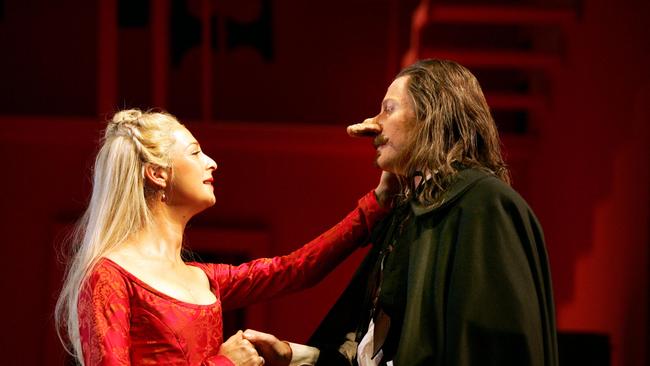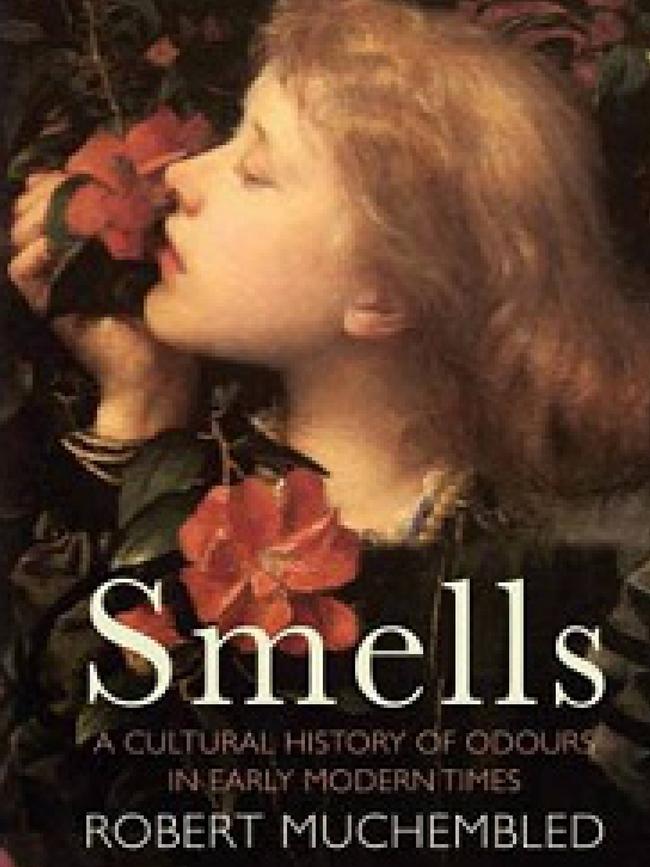First came the orgasm, then came Satan. Now smell is in Robert Muchembled’s sights
Until recently, our sense of smell was considered ‘a biological dead end, doomed to gradual extinction’, but it’s role in shaping humanity, it turns out, is enormous.

An authority on First World orgasms (his 2005 book The Orgasm and the West: A History of Pleasure) and Satan (his 2002 book A History of the Devil), the eclectic French historian and author Robert Muchembled trumps his oeuvre with his new book, Smells: A Cultural History of Odours in Early Modern Times.
This is a book that, in part, amounts to an impossibly French meditation on the goaty reality of humanity: sweating, bleeding, pissing and general scatological revelry within the greater context of the perfume industry and science.
With transparent delight, he quotes obscure writers such Eustorg de Beaulieu, a 16th-century poet obsessed with flatulence, who “boldly sang of the universal merits of farts” and had a particular fondness for the silent fart warming the small of his mistress’s back.
Using German sociologist Norbert Elias as an ideological springboard (he believed the evolution of Western civilisation was not merely aligned with but dependent on the domestication of affectivity), Muchembled launches into a captivating analysis.
What we understand as human coarseness has, over millennia, been refined into “highly codified attitudes of politeness that defined decency”, and the management of bodily functions and odours was an essential part of this process. Disgust was — and remains — if not a civilising force then a means of controlling behaviour, as the current woke movement demonstrates.

The relationship between smells and disgust is, however, cultural rather than innate. Children, as Muchembled points out, relish the scent of their own excrement until the ages of four or five, when they are conditioned to address it as repugnant.
Historically, the phobia about bottoms is relatively recent. Renaissance France was “a foul-smelling fug, without showing the least disgust at human excrement or urine”. As an example, Muchembled cites the 18th-century liqueur recipe that required only the distillation of a ripe cow pat in brandy, a grotesque proposal to the 21st-century palate.
Similarly, ungloved 19th-century tanners and fullers, without the benefit of health and safety regulations, spent their days dipping hides in stale human urine to weaken the hairs in order to scrape them off, and then smeared the hides with canine excrement (“pure”) to soften them so they could be shaped into book covers, furniture, clothing, saddles and so on.
In addition to cultural norms, there is also the degree of individual olfactory sensitivity to consider. Visitors to the subterranean Musée des égouts de Paris (the Paris Museum of Sewers) experience wildly varying responses to the inescapable fumes: my daughter’s godfather, desensitised by eight pet cats, exhibited an early modern European indifference to the effluvium; my daughter, then eight, considered it tolerable; and I began retching in the entrance area, overwhelmed by the fetor from the mildewed, dripping, active sewers overhead.
Muchembled traces the 21st-century concept of smells to the Ancient Greeks, who associated pleasant smells with the divine. Conversely, offensive odours — stale sweat, faecal matter, belching and so on — were synonymous with vulgarity.
Despite the bawdy nature of the 17th and 18th centuries in particular, this repudiation of our bestial ancestry only continued to gather momentum. Renaissance intellectuals challenged the censorship, correctly intuiting the symbiotic relationship between smell and sexuality. Not infrequently, this led to curious theories.
French writer François Rabelais saw a correlation between the length of a man’s nose and that of his phallus, and Italian scholar Giambattista della Porta concurred, adding that the size of a man’s nostrils corresponded with the volume of his testicles. “The upshot,” Muchembled concludes, “was that a man’s sexuality was as plain as the nose on his face.”
Age of Enlightenment French philosophers — among them Denis Diderot, Jean-Jacques Rousseau and Pierre Jean-Georges Cabanis — put a different twist on the link, reframing smell as the “most voluptuous” of the senses. The olfactory delirium to which they referred was not merely a matter of sensuality but of profound emotional resonance.
In addition to its implication in sexual desire, smell is one of the critical gateways to emotional recall.
Now 76, Muchembled is perhaps unaware of the role of smell in the suicide of Australian rock star Michael Hutchence. In 1992, the singer, heavily inebriated, was assaulted, fell and fractured his skull. Two areas of his brain were damaged, and he completely lost his sense of smell: anosmia.
A sensualist, Hutchence was left feeling as if he were “floating in space”. As smell is the only sense that evolves from experience, its loss has significant repercussions. Hutchence complained of no longer being able to taste food or women, and fell into a severe depression.
Five years later, he hanged himself. Tragically, the relationship between reduced objective olfactory performance and depression has only since been shown to be reciprocal.
The sense of smell is also thought to be responsible for feelings of love, a drive understood by researchers as a form of “olfactory ecstasy”. Olfactory fingerprints — or “smellprints” — are unique in constitution and impact, causing us to be “literally led by the nose” to the beloved.
The rightness of a signature smell releases floods of hormones, committing it to memory. Muchembled explains: “Coming across the same scent again spontaneously triggers the whole bundle of affective memories in a sort of chain reaction that could be called the ‘madeleine effect’, after the famous scene in Proust’s Remembrance of Things Past.”
Our smellprints vary from season to season and year to year. “Every stage of life is saturated with scented messages,” Muchembled writes. Flowers continue to be given during courtship and in celebration and commemoration. I associate the fragrance of white lilies with my brother’s suicide; the house was overwhelmed by bouquets before his funeral.
Similarly, unpleasant odours have always had historical associations: for example, the village charivari or “rough music”, a protest against violation of behavioural norms — domestic violence, the marriage of a geriatric man to a very young woman, and so on —was, in France, accompanied by the stench of an incinerated donkey carcass.
Before the advent of internal plumbing and deodorants, feminine body odours inspired especially virulent misogyny. Doctors believed women to be repulsive by nature. Even in the first century AD, Pliny the Elder cast women as the horsewomen of the Apocalypse: when a woman menstruates, he wrote, “a horrible smell fills the air; to taste it drives dogs mad and infects their bites with an incurable poison”.
Menstrual blood was also thought to blacken warm linen, induce spontaneous abortions in mares and to render female donkeys barren. Menstruating women, desperate to mask with perfume the odours that resulted in their denigration, were then condemned by men of the church “for going against the natural order to tempt men astray”.
Postmenopausal women were considered equally repellent. Accused of fraternising with the Devil — who was always putrid — they were vilified in literature. In 1550, it was written that an old woman’s sigh inspired dogs to bark in terror and rivers to flow backwards. A widely read 1559 text by a physician neatly summarised the situation: “Women abound with excrement, and emit ill smells.”
Muchembled notes that demonising women is a means of legitimising male dominion. In such a climate of gendered disgust, the bathtub became a symbol of the elite feminine and soon evolved into an 18th-century erotic trope.
Until the 21st century, the sense of smell was routinely ignored by researchers, who understood it as a “superfluous, vestigial remnant of our prehuman past.” The nose was thought to distinguish 10,000 or so smells at the most, crude in comparison to the eye, which detects millions of shades, and the ear, which can identify some 500,000 sounds. In comparison, smell was a poor cousin, “a biological dead end, doomed to gradual extinction”.
Muchembled writes that molecular biologists and physiologists have done little with the discovery that we have close to 400 olfactory receptors and unique sets olfactory receptor genes — “a sort of personal ‘noseprint’ linked to our immune system” — but neurobiologists have dedicated significant attention to the finding, particularly in terms of understanding the relationship of these receptors to cellular signalling.
Elegantly wicked and meticulous in its execution, Smells: A Cultural History of Odours in Early Modern Times seems far too short, as if it should have been a series of volumes addressing the history of smells.
Muchembled’s passion and curiosity — infinite, infectious — are a joyous counterpoint to the current global tedium, if only for reminding us that there once existed a world in which one could fart without fretting about transmitting airborne diseases.
Antonella Gambotto-Burke’s new book, Apple: Sex, Drugs, Motherhood and the Recovery of the Feminine, will be published in 2021.





To join the conversation, please log in. Don't have an account? Register
Join the conversation, you are commenting as Logout